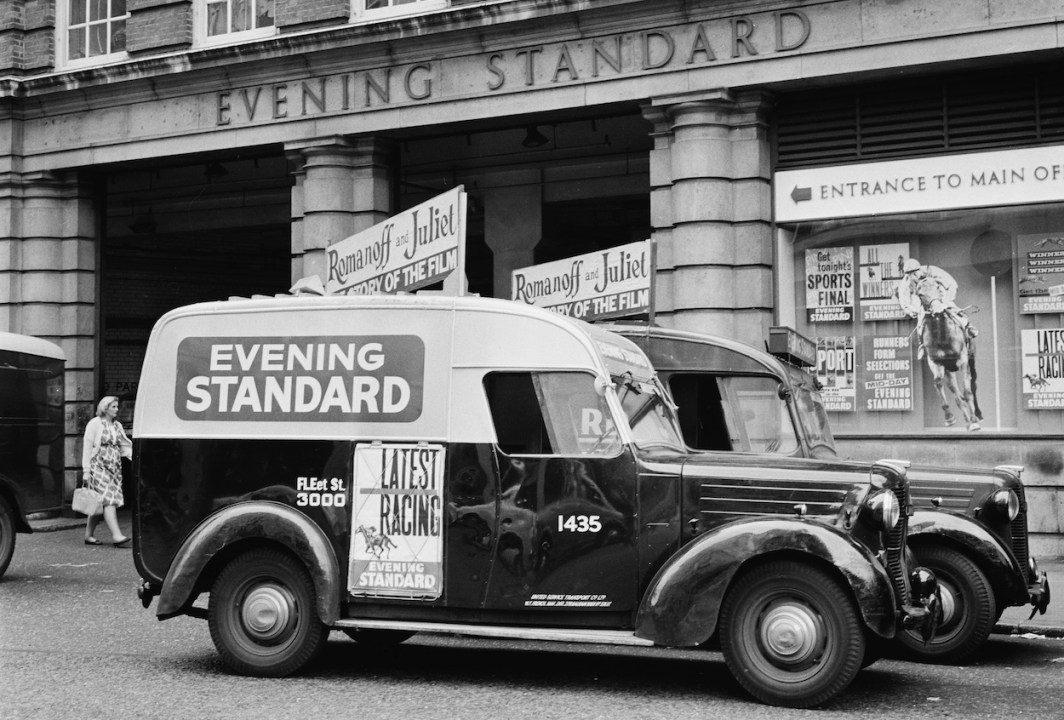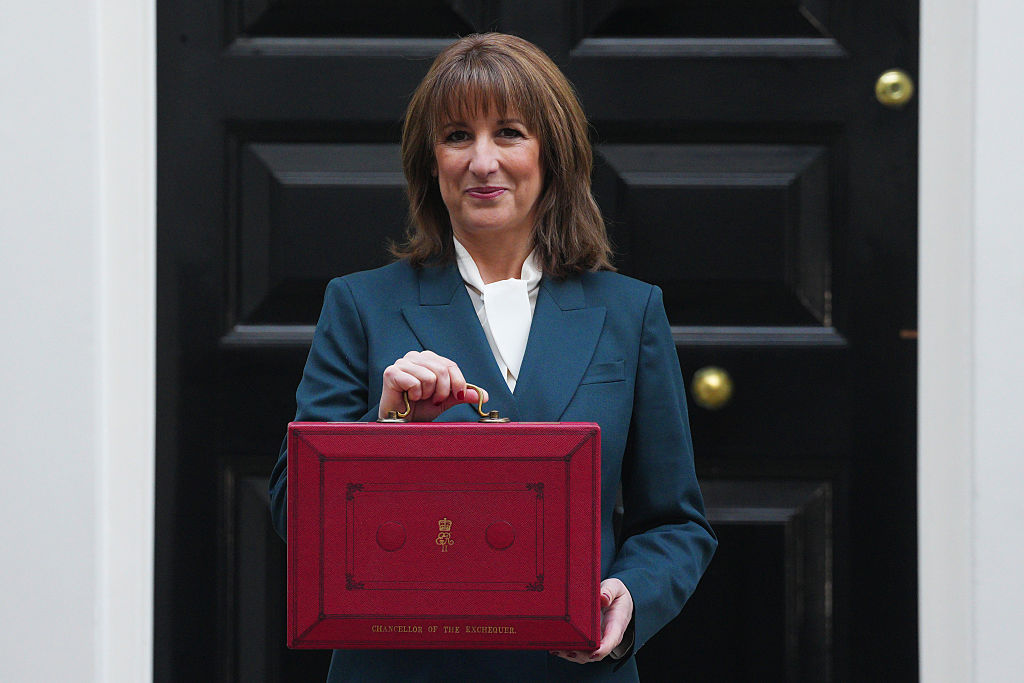Like any bunch of ageing ex-hacks, those of us in the ‘Former Evening Standard Employees’ Facebook group are fond of reminiscing about the past. Occasionally, it’s at boozy reunions, when we recreate afternoon epics in the Elephant pub near the old Kensington office. More often, it’s when posting online RIPs to old colleagues who’ve passed to that great newsroom in the sky – sometimes, sadly, well ahead of deadline.
The last few days, though, a Facebook page often dedicated to mourning bygone scribes and sub-editors has suffered a rather wider bereavement. Last week, it was announced that the Standard would cease its daily newspaper altogether, ending two centuries of print-runs in the capital. Instead, there’ll be just the website, plus a once-a-week edition – the Weekly Standard? – which will be a news-and-lifestyle digest. No more front pages showing 9/11 or Grenfell as they were unfolding. No more breaking the news that London had won the 2012 Olympics – or, the very next day, the story of the 7 July Tube bombings.
The Standard could never quite make up its mind who exactly its readers were
For those of who worked at the paid-for Standard of yesteryear, which produced five editions a day between 7 a.m. and 4 p.m., this is of course a poignant moment. Yet unlike when we mourn deceased colleagues, however, there’s been little hesitation in speaking ill of the dead. The consensus is that the Standard, like some gout-ridden old sub-editor, has not taken good care of itself in recent years. A paper that once ran to 80 pages and saw itself as a national newspaper in all but name has shrunk to a fraction of that.
The Standard’s management blame the introduction of wi-fi on the Tube, which has robbed it of a once-captive market, and the shrinking of its commuter readership, who now work increasingly from home. The paper’s bled £84 million over the last six years, despite becoming a freesheet in 2009 in a bid to increase circulation.
But apart from being a loss for readers, the Standard’s demise is also a loss for the trade of newspaper journalism. Like other big regional papers, such as the Glasgow Herald and the Yorkshire Post, it represented a valuable stepping stone between local papers and the more demanding newsrooms of Fleet Street. Young hacks who would have struggled had they gone straight to the Mirror or Times, could find their feet there, honing their skills to its ferocious deadlines. Or, in the rather more romantic words of former Standard man Tom Leonard (now at the Daily Mail): ‘The Standard was the closest you could get in the real world to a newspaper in a classic Hollywood film, with reporters and photographers actually rushing out together on stories… and editors actually occasionally saying dramatic things like “hold the front page”.’
It wasn’t just a case of bashing out wham-bam news stories either. In the Standard’s heyday, reporters also had to write so-called ‘colour’ as well – the chatty, humorous pieces that give light relief amid pages of crime and politics. The ultimate test was the page three piece – typically an upbeat, photo-led article involving a celebrity or lifestyle trend. In the space of less than hour, one would have to churn out 750 wry words on David Beckham’s latest tattoos, or Lewisham’s optimistic bid to market itself as the new Shoreditch. It’s hard enough writing somber reports on murders and train delays to a tight deadline. It’s another thing altogether to be witty and humorous. Especially when sat in the office at 5 a.m., when the first page three would be commissioned for the 7 a.m. City edition. Getting a Pulitzer had nothing on it.
Page threes were so hard that newbies like me weren’t often asked to do them. But even then, it was instructive to watch – proof that what other Fleet Street journalists might take an afternoon to knock out, a good Standard hack could do in an hour (albeit with a lot of cursing and fretting). Nor was it an excuse for sloppiness. Copy that was dull, flat, or typo-strewn, earned me worse bollockings at the Standard than I’ve had anywhere else.
Yet for all the nimbleness with which it served them, the Standard could never quite make up its mind who exactly its readers were. Was it the voice of London, with its multi-cultural, inner-city neighbourhoods? Or should it cater to its affluent, Conservative-leaning commuter readership, who’d buy it for the journey home to Tunbridge Wells?
While I was there in the 1990s and early 2000s, it cleaved strongly to the latter. Coverage of issues like migrants and asylum was similar to the Daily Mail, our Associated Newspapers stablemate. And under the huntin’, shootin’, fishin’ editorship of Max Hastings, the newsdesk showed an interest in fox hunting that many staff found baffling. When the paper did cover city life itself, it was that of Sloaney west Londoners – the Hooray Henrys and Henriettas whose clubbin’, shaggin’, snortin’ exploits were already chronicled by the paper’s gossip diary. At the time, newly-gentrified districts such as Clapham and Stoke Newington were filling up with affluent young professionals, all of whom the paper could have wooed. But outside of SW3, the only thing the Standard seemed to cover much was crime. At a time when London was swinging again under Cool Britannia and Tony Blair, it felt out of touch.
Things didn’t improve when Hastings was replaced by Chelsea-born Veronica Wadley, a former debutante and Mail features executive, who turned the paper into what the newsroom nicknamed ‘the Baby Mail’. Out went much of the humour and urbanity. In came lurid ‘exposes’, such as a story revealing that cannabis was being sold openly on the streets of Brixton. For anyone who lived there, as I did, this was akin to being told that the Pope had Catholic leanings, or that bears relieved themselves behind trees.
At the time, I remember thinking that the Standard would be better off with the liberal tone of the Observer, back then required reading among the young urban middle classes. Indeed, just months after Wadley left in 2009, the paper ran an extraordinary advertising campaign strap-lined ‘Sorry for losing touch’, apologising for the negative tone of previous years. Some saw it as an implicit criticism of Wadley’s approach, which they felt was tone-deaf to a city that was increasingly Labour-leaning.
Others, though, would argue that the rot started long before. Besides, by then the Standard was facing the same existential challenges as every other newspaper – haemorrhaging ad revenues to social media platforms Facebook, where we ex-Standard greybeards now host our virtual alumni club.
It’s not all gloom. Many ex-Standard hacks have gone on to be editors and senior reporters elsewhere on Fleet Street, while I left the paper in 2003 to go freelance in Iraq. Post-Saddam Baghdad was a tougher beat than Kensington and Chelsea, but even so, those four years at the Standard stood me in good stead. Ironically. the papers that took most of my copy back then were the likes of the San Francisco Chronicle and the Scotsman – again, big regional papers that, like the Standard, punched above their weight, and are now likewise shadows of their former selves.
I still have my old cuttings from all three – including a few Standard page threes cranked out under speed. They’re a bit scrappy, to be honest, but they’re among the pieces I’m proudest of. Doing them to the gentler deadlines of the new Weekly Standard just wouldn’t be the same.








Comments